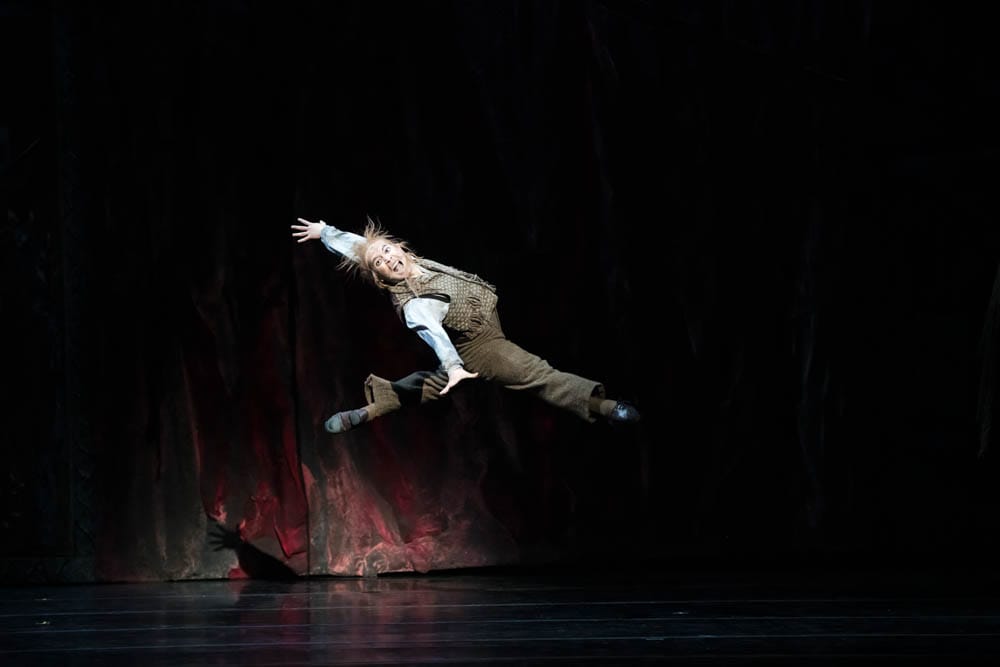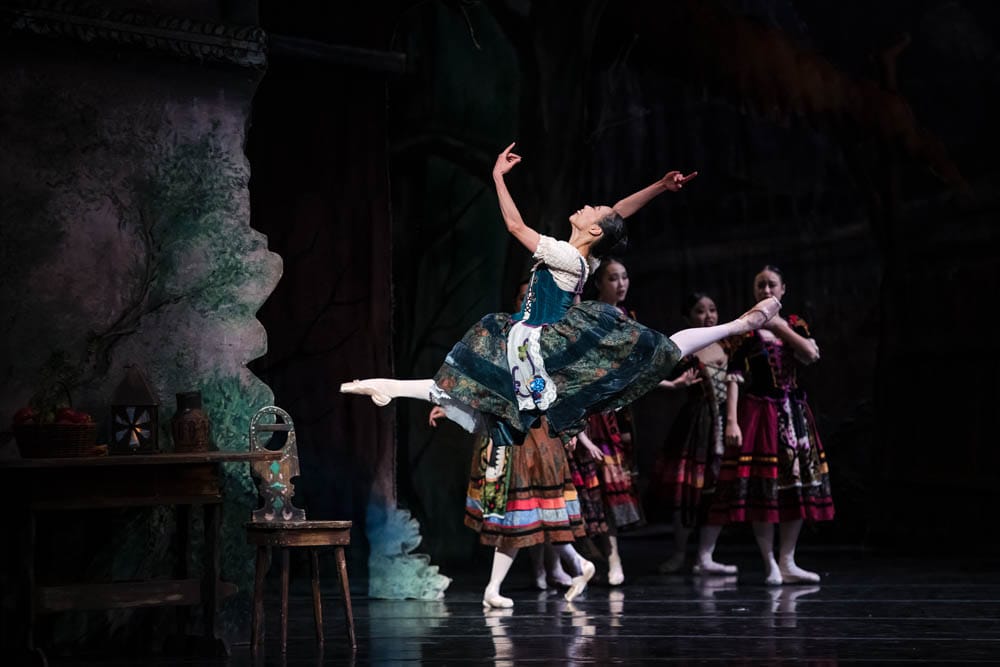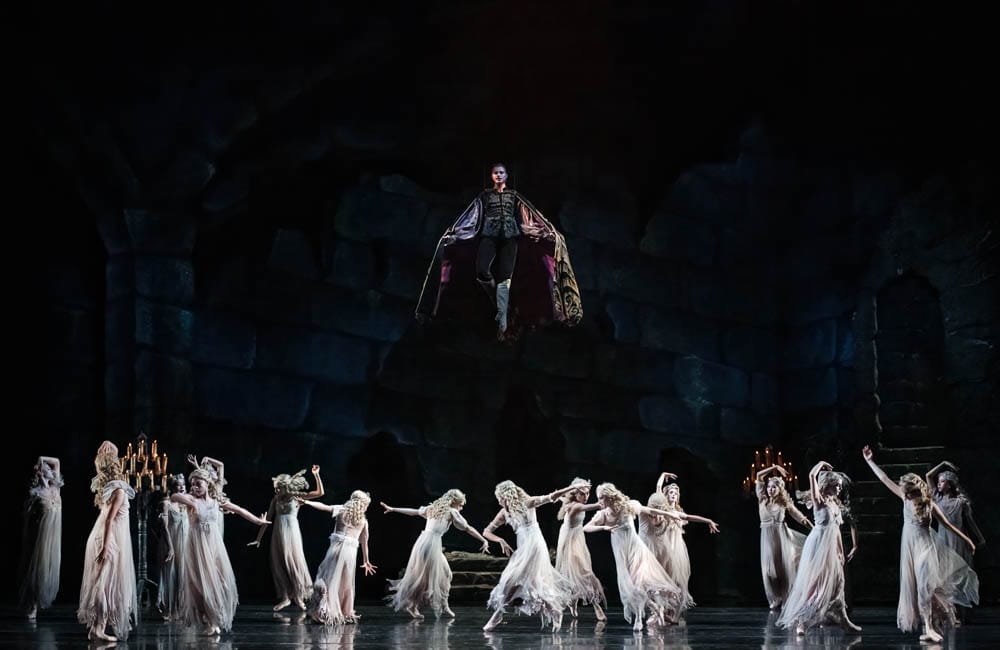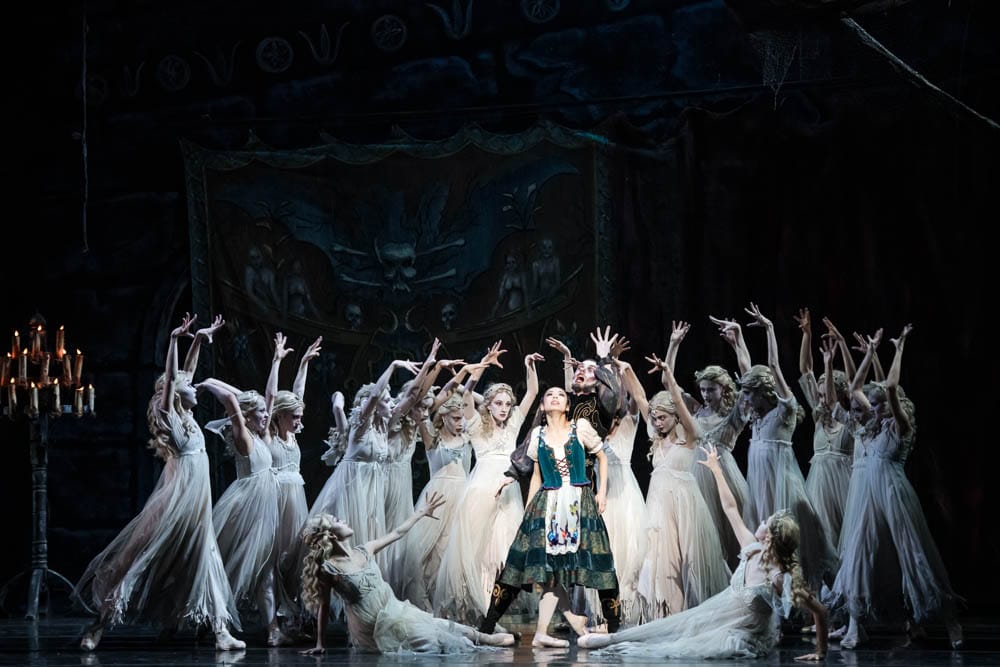Tulsa Ballet: Dracula
Tulsa Performing Arts Center
November 3, 2024
It’s not principal dancer Aubin Le Marchand’s fault that I couldn’t stop seeing Nandor the Relentless when he came onstage as Tulsa Ballet’s Dracula. It hadn’t occurred to me, rewatching What We Do In The Shadows a few days before, that the FX vampire mockumentary would run parallel to what I was about to see at the Tulsa Performing Arts Center. Sitting in the dark on my Vampiric Council-worthy burgundy velvet seat, it took some effort to remember that what I was witnessing wasn’t meant to be a comedy.
It's right on the edge, though. Tulsa Ballet has presented Ben Stevenson’s Dracula multiple times through the years, and every time I’ve seen it, part of me has wished the choreographer would have let some of his seriousness unravel and gone over that edge into full vamp-camp mode. But the entertainment value of any and all vampire business whatsoever—and the excellence of the leading dancers in this production—made Tulsa’s Transylvania a satisfying Halloween weekend haunt.

Created for Houston Ballet in 1997 to mark the 100th anniversary of Bram Stoker’s gothic novel, Dracula copies nearly every convention of 19th century ballet: a peasant village scene, a freshly-betrothed young couple torn apart by a well-dressed interloper, a high-jumping jester, and a flock of ghostly women who’ve either been enchanted by men or are forming vengeful ranks to send them to their doom (or both).
In one move that does run contrary to ballet convention, it starts not in the innocent peace of the everyday world but in Dracula’s gothic, candelabra-decked crypt. It’s an opening that deprives us of some narrative suspense but makes up for it by immediately delivering the undead goods the audience really came to see. In kabuki-adjacent makeup and a massive violet-lined cape (more moth-inspired than batlike), Le Marchand flexed his long fingers, seethed and slumped across a staircase in pre-feed moodiness, then devoured the space with a decisively musical attack. This Dracula doesn’t have a lot to do choreographically—a few repeated movement motifs, a lot of standing and cape-swirling—so stage presence is everything, and Le Marchand went for it full-out. (His blood-smeared face through my binoculars? Intense and legitimately terrifying.)

Like Dracula, his brides are a bit of a mess. Stoker’s novel features three of these ghoulish ladies; Stevenson gives us more than a dozen, the better to fill the stage with ragged tulle and matted blond tresses worthy of Tilda Swinton’s in Only Lovers Left Alive. Propelled by a life force not their own, the brides half-stagger/half-glide with T. Rex arms and fling themselves to the ground like brushed-off cobwebs. By the end of Act One, they get a new addition (the village girl Flora, performed with gusto by Jaimi Cullen) delivered to them by a rattling coach led by two skeleton-headed horses and driven by Dracula’s familiar Renfield, performed on Sunday by the astonishing apprentice dancer Shi Jean Kim, cringing and skittering with loose limbs, wild barrel turns and fanatical eyes.

Act Two brings us to a Peasant World with which ballet lovers are familiar, full of Central European-inspired folk dance tropes and an old woman dispensing wisdom and caution to a wide-eyed young woman named Svetlana (Nao Ota) and her paramour Frederick (Jun Masuda). Masuda is a convincing comic actor whose jumps flashed and floated like his puffy white sleeves. Ota has a powerful arabesque and a lofty leap, and she manages tricky little turning sequences with ease. Together they brought their romantic duet home with a sweet sincerity. But Svetlana, of course, is the next to get spirited away by the dreaded carriage, despite the garlic necklace she wears as an engagement adornment. This is Transylvania, after all: best to be prepared.

Act Three takes place in Dracula’s literal bedroom, complete with tapestries to keep out the light and, at stage left, an inset four-poster bed draped with curtains. As Frederick and other village friends (including a cross-wielding priest) arrive to rescue Svetlana, it’s all-out mayhem, with undead brides flying—in some cases literally, on wires—across the stage, humans and vampires fighting, and even (unless my mortal eyes deceived me?) a stunt Dracula tag-teaming with Le Marchand to provide the illusion of him whizzing from one place to another at lightning speed. This fight scene goes on about 16 measures too long, but the payoff is solid: Frederick pulls down the tapestries, and Dracula, flying into the chandelier, gets incinerated by sunlight.
In the end, Svetlana’s reward for all this is a final duet with Frederick, as the now-fried Dracula sends up plumes of smoke overhead like a censer. While being an undead bride frankly looks like more fun, it’s good to see her happy (even if, as in most traditional ballets, she needed a bunch of dudes to save her). It’s also always good to hear Tulsa Symphony musicians playing live for Tulsa Ballet, with pianist Andrew Lahti giving clarity and punch to the frenzy of music by Franz Liszt assembled by John Lanchbery.

For all the weightiness of its set, score and scenario, I still hold that this Dracula is a “serious” ballet that really wants to be a romp—one that I would have enjoyed more only if I’d had my own version of that fabulous cape to wear to the matinee. Maybe something for the Tulsa Ballet merch store to think about next time they bring this piece around.






